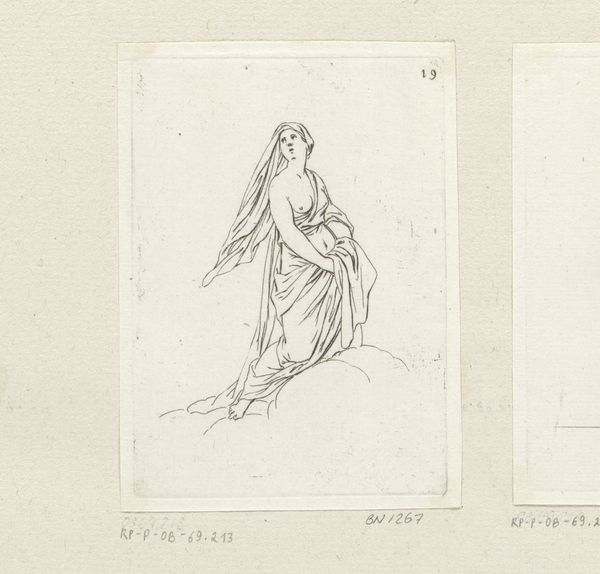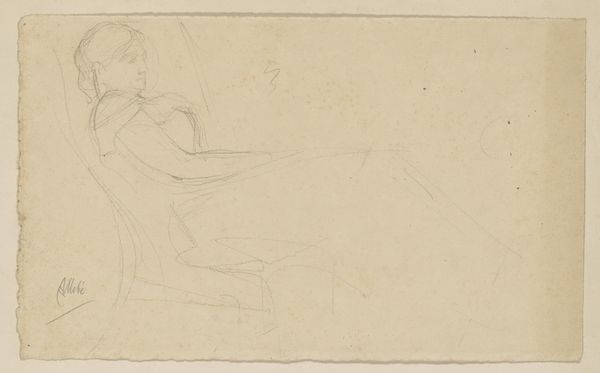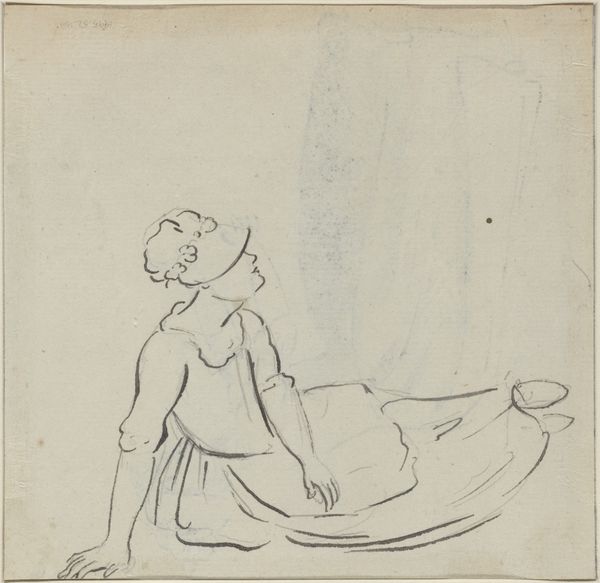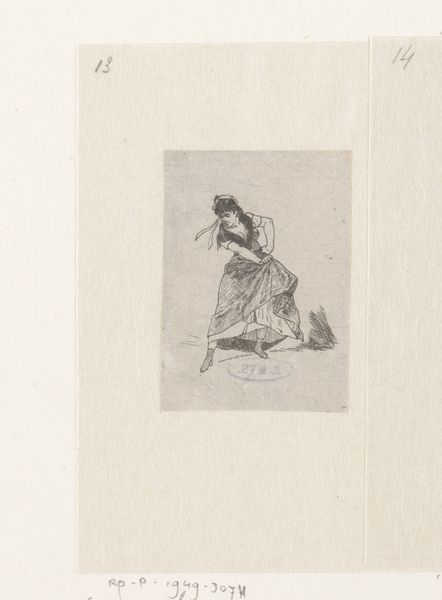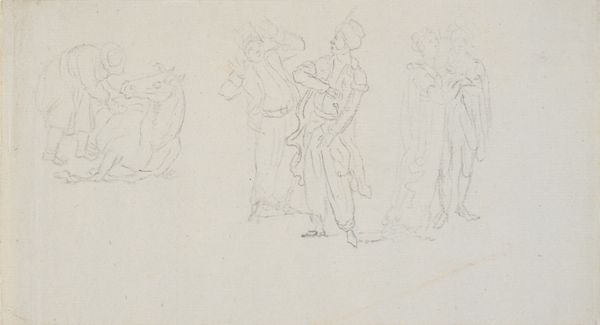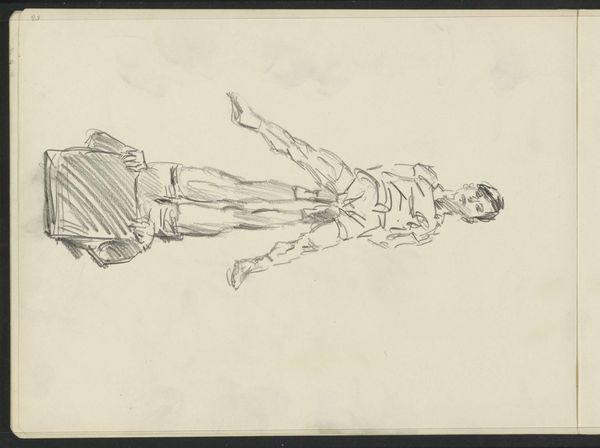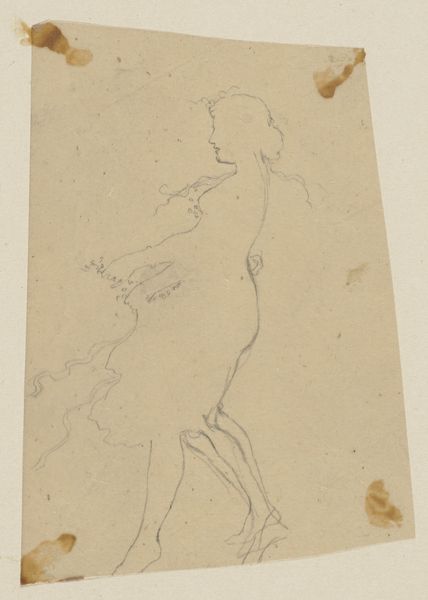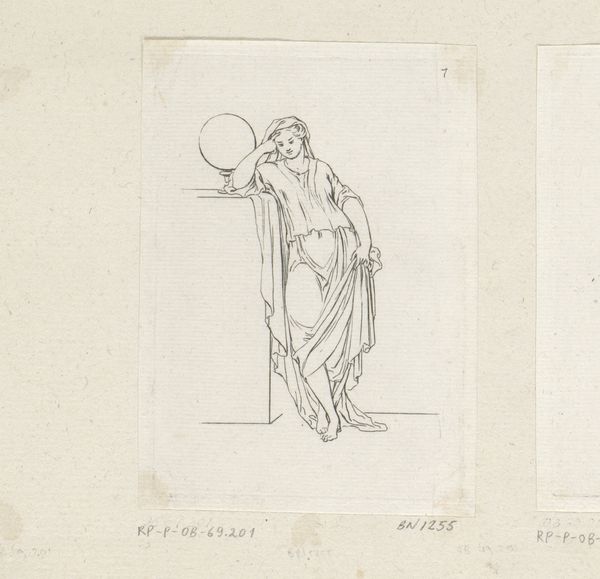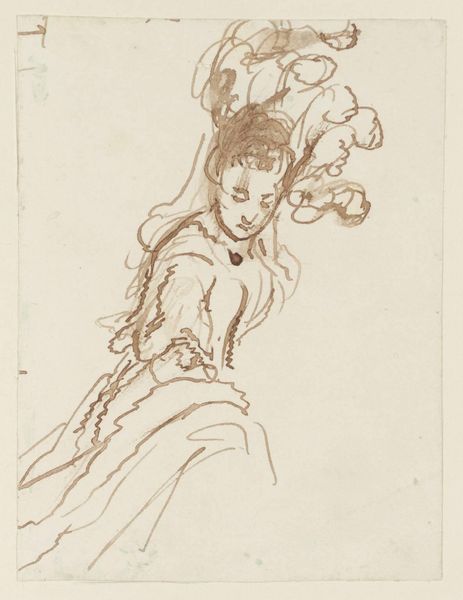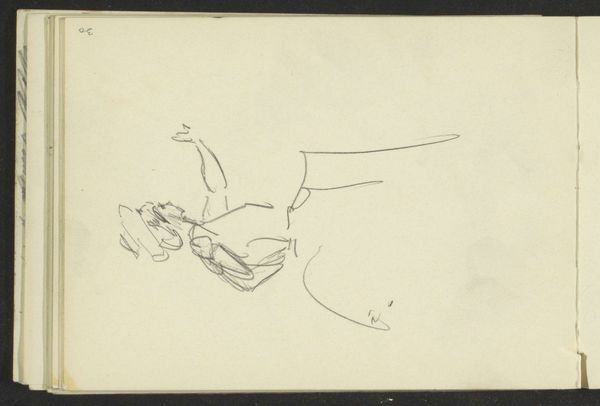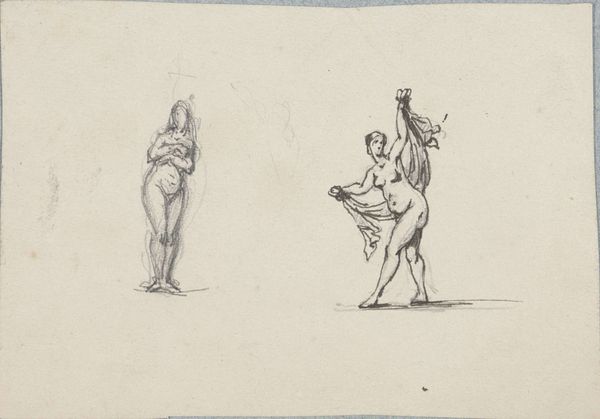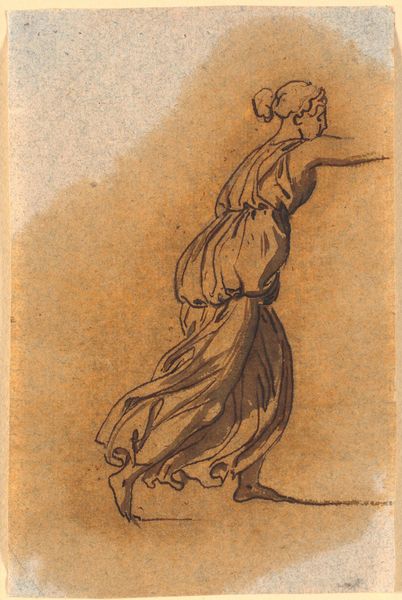
Knielende vrouw met kam (in doos met 43 tekeningen) 1703 - 1775
0:00
0:00
drawing, paper, pencil
#
drawing
#
baroque
#
figuration
#
paper
#
pencil
#
line
#
history-painting
#
academic-art
Dimensions: height 83 mm, width 104 mm
Copyright: Rijks Museum: Open Domain
Louis Fabritius Dubourg rendered this sketch of a kneeling woman with a comb using pen and gray ink. Consider the comb, an ancient tool, depicted here in the hand of a classical figure. We see it not merely as a grooming aid but as a symbol of transformation and preparation. In antiquity, such acts of grooming were imbued with ritualistic significance, think of the toilette of Venus, preparing for love, or of funerary rites. Observe how this motif echoes across time. A similar gesture appears in early Christian art, where combing hair symbolized purity and readiness for spiritual union. The act takes on a psychological dimension. It speaks to our subconscious desires for order, control, and the presentation of self. The kneeling posture, combined with the intimate gesture, creates a powerful engagement, stirring deep within us notions of beauty, ritual, and the eternal human quest for self-refinement. It's a cyclical progression, where ancient symbols resurface, evolving and acquiring new layers of meaning across history.
Comments
No comments
Be the first to comment and join the conversation on the ultimate creative platform.
